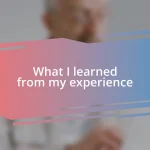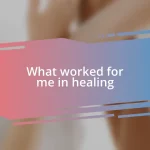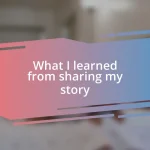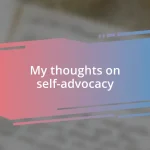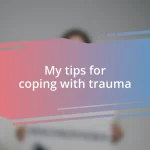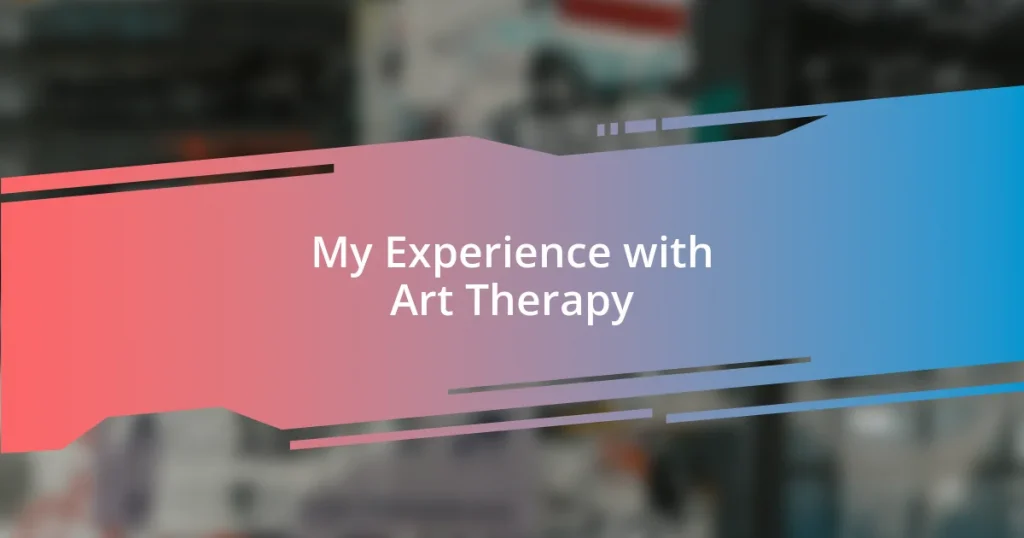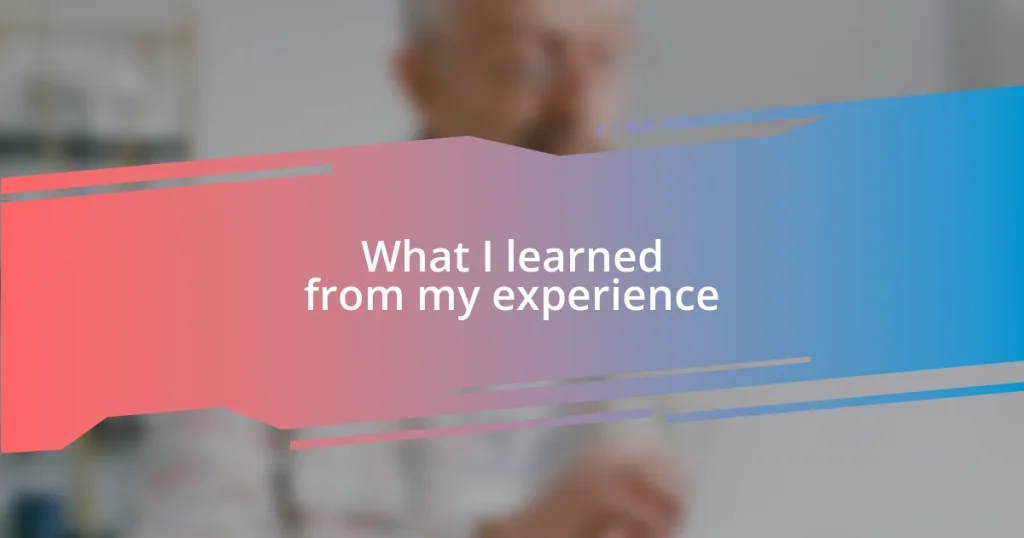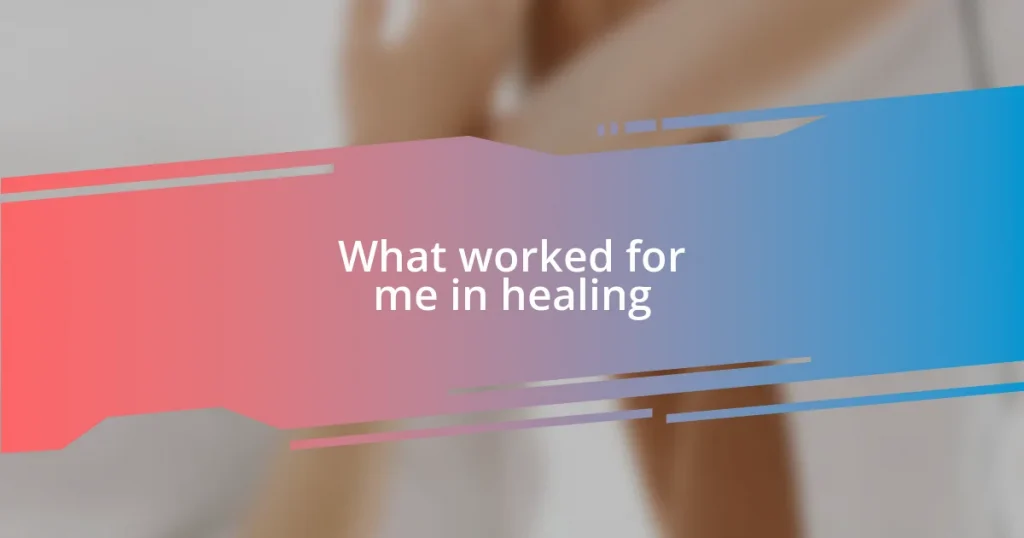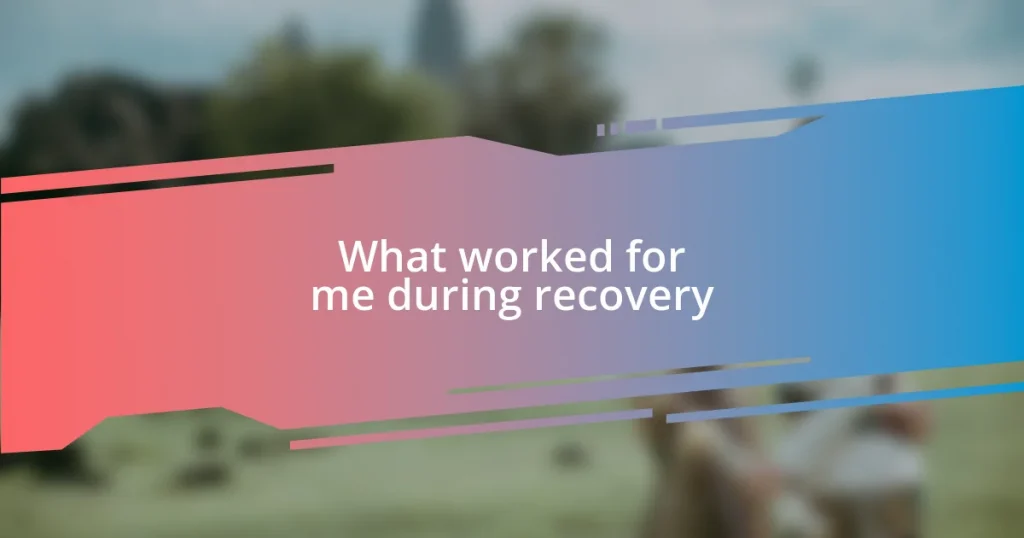Key takeaways:
- Art therapy facilitates emotional expression and self-discovery, helping individuals confront and articulate their feelings through creative processes.
- Participating in art therapy fosters a sense of community and connection, allowing people to share their vulnerabilities and inspiring mutual support.
- Creating a dedicated artistic space and letting go of perfectionism enhance the therapeutic experience, emphasizing the importance of process over product.
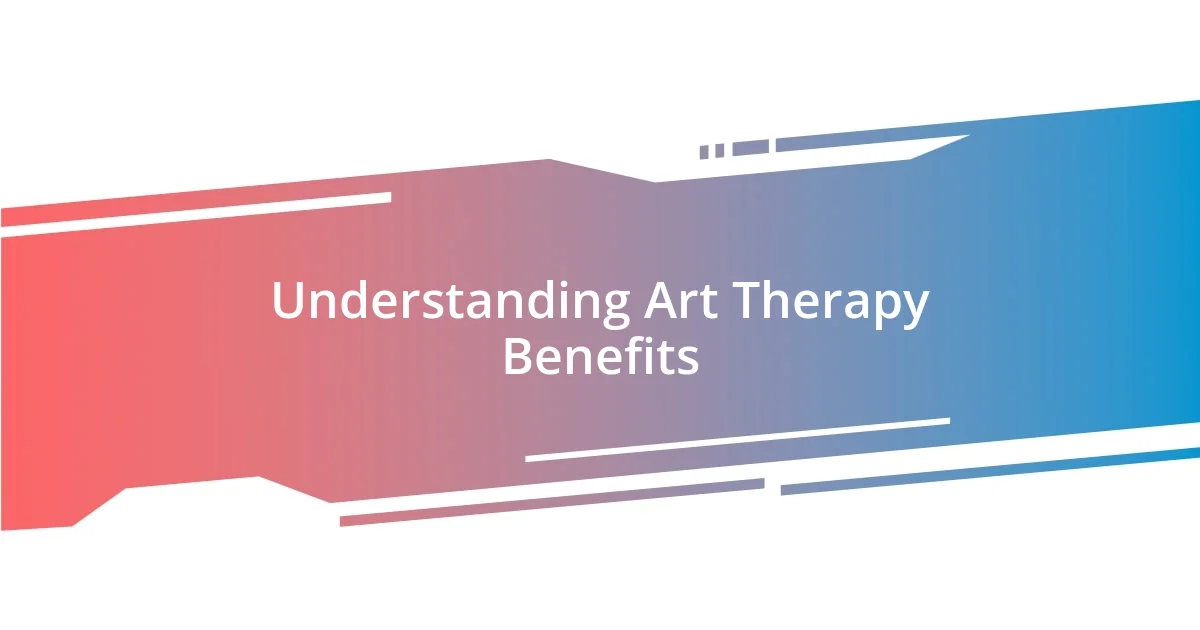
Understanding Art Therapy Benefits
Art therapy offers myriad benefits, particularly in emotional expression and mental well-being. I remember my first session vividly; it was as if I opened a door to parts of my inner self I had long forgotten. Have you ever felt overwhelmed yet unable to articulate your emotions? Art provided me with a way to visualize and navigate those feelings, turning chaotic thoughts into colors and shapes.
One remarkable advantage of art therapy is its ability to reduce stress and anxiety. When I picked up a paintbrush, I noticed an instant release, like letting out a deep breath I didn’t even know I was holding. Exploring the strokes and colors became a meditative practice, suspending my worries momentarily and allowing me to reconnect with my breath.
Moreover, art therapy can improve self-esteem as individuals witness their creative expressions come to life. I recall feeling a sense of pride after completing a piece, something tangible representing my journey. Isn’t it fascinating how creating something unique can boost our confidence and remind us of our capabilities? This sense of accomplishment is invaluable, especially when navigating challenging times.
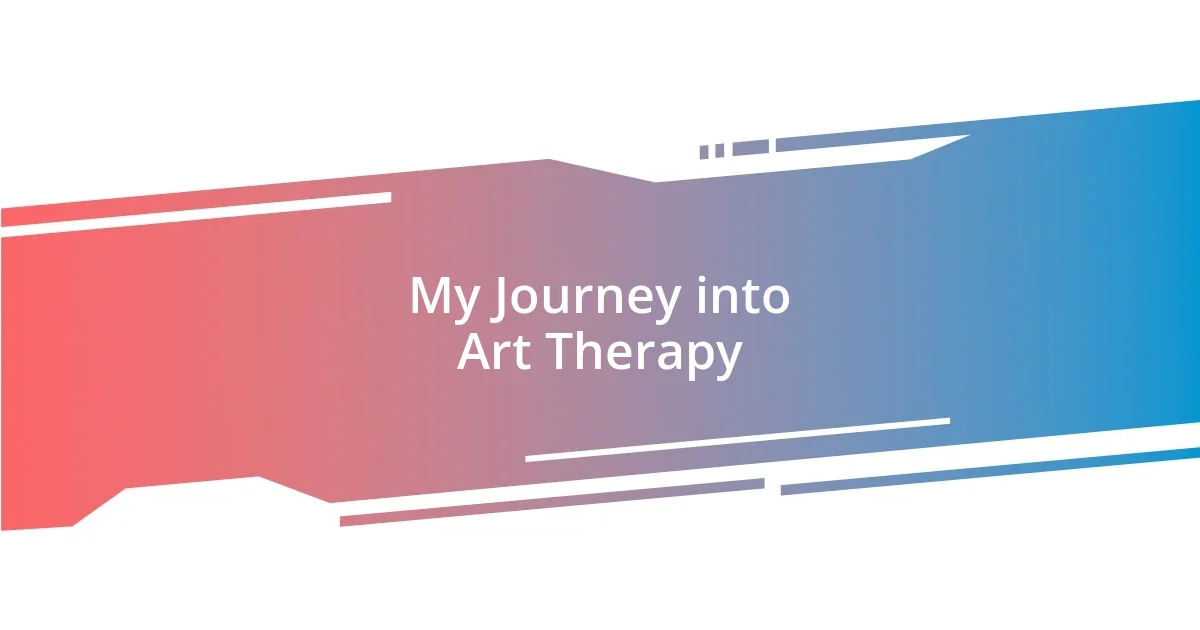
My Journey into Art Therapy
Art therapy felt like a gentle nudge into uncharted territory. I had always been hesitant about my artistic skills, often labeling myself as “not creative.” The first time I sat down to explore different mediums, I was surprised; the moment I smeared paint across the canvas, it was as if I had unearthed a hidden part of myself. It wasn’t about perfection but rather the freedom to express without boundaries. Have you ever been surprised by your own capabilities? That’s the magic of giving an artistic outlet a chance.
As I ventured deeper, I realized art therapy became a dialogue between my emotions and the canvas. One evening, I was grappling with a mix of sadness and nostalgia, and rather than drown in those feelings, I transformed them into swirling blues and soft grays. Looking back, it’s incredible how those colors so accurately expressed my mood. Did you know that colors can evoke specific emotional responses? For me, blue has always been calming, and painting with it in those tough moments offered a soothing embrace.
Finally, I found that sharing my creations with the group was a transformative experience. Each person brought their story, and witnessing their journeys opened my eyes to the myriad ways art touches us. There was an unspoken bond as we expressed vulnerability through colors and shapes—the act of sharing diminished the weight of our individual experiences. Have you ever felt lighter just by sharing your thoughts with someone? That sense of connection through art was truly empowering.
| Aspect | My Experience |
|---|---|
| Initial Hesitation | Felt anxiety about my lack of artistic skills |
| Emotional Expression | Used colors to navigate complex feelings |
| Community Connection | Felt empowered sharing my art with others |
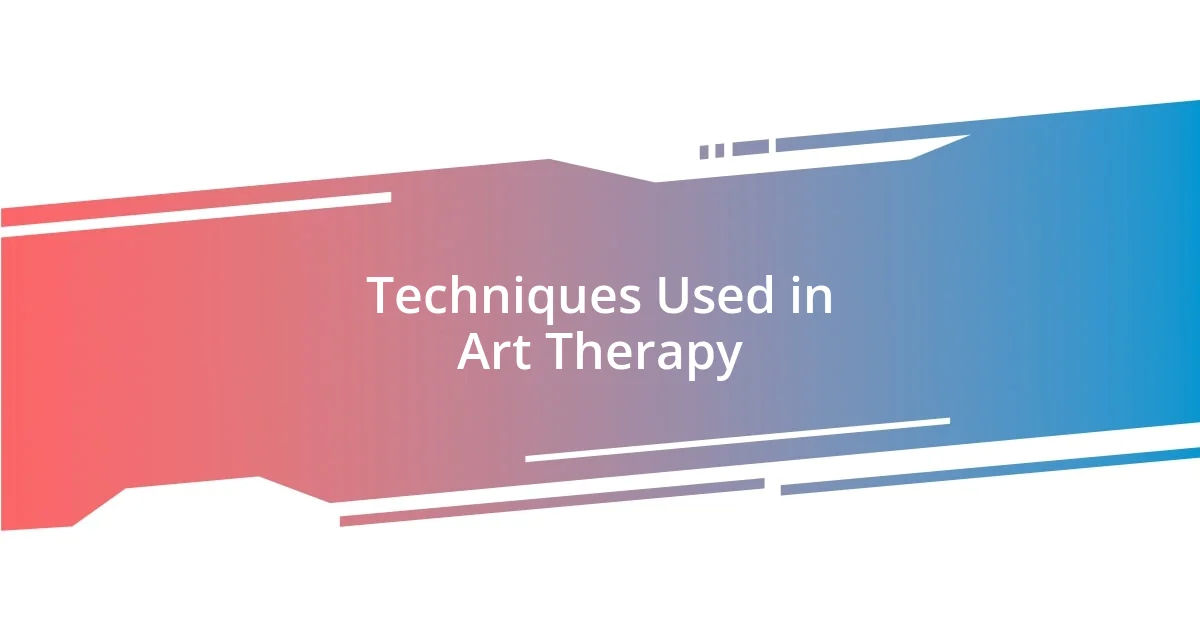
Techniques Used in Art Therapy
Art therapy employs a variety of techniques that can be as diverse as the individuals who participate in it. I remember experimenting with collage during one of my sessions, where I gathered images and words from magazines that resonated with my feelings. The process was both liberating and cathartic, as I discovered ideas and concepts that had been hidden in my subconscious. It’s fascinating how such simple materials can open the door to profound self-discovery and healing.
Here are some common techniques used in art therapy:
- Painting: Utilizing paint to express emotions and explore creativity.
- Drawing: Capturing feelings in a raw and immediate way through sketches or doodles.
- Collage: Combining various materials to create a narrative or an expression of self.
- Sculpting: Working with clay or other 3D materials to represent internal experiences.
- Journaling with Art: Blending writing with drawings or images to provide a comprehensive emotional outlet.
Each technique offers a unique lens through which I learned more about myself. In one memorable session, I worked with clay, shaping my raw feelings into a tangible form. As my fingers pressed into the cool clay, I felt a sense of relief, as if my anxieties were melting into the material. It’s these moments of connection—to the materials, to my emotions, and to my fellow participants—that truly amplify the transformative power of art therapy.
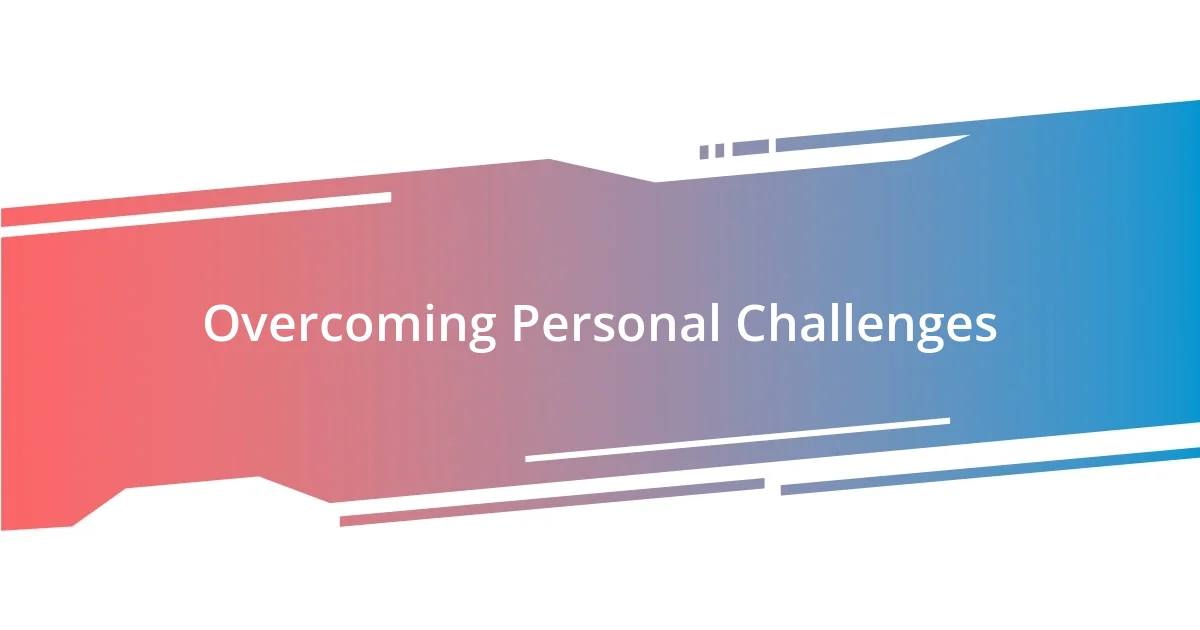
Overcoming Personal Challenges
Art therapy helped me tackle personal challenges head-on. I remember one session when I felt overwhelmed by a situation in my life. Instead of avoiding those feelings, I chose to immerse myself in a bold, chaotic painting. As I splattered colors onto the canvas, each brushstroke became a release, transforming my frustration into vibrant expression. Have you ever felt that rush of emotion become tangible? That’s the beauty of using art to confront what weighs us down.
There were times when I faced self-doubt that crept into my daily life. A significant moment for me was when I created a self-portrait, incorporating both bright colors and darker shades. This duality illustrated my conflicting emotions—pride and insecurity. Engaging in this reflective process allowed me to acknowledge my fears while celebrating my strengths. How often do we allow ourselves to see the full spectrum of who we are? Art therapy provided that necessary space for honest self-reflection, which I found incredibly liberating.
The connections formed during group sessions were essential in my journey, especially when confronting challenges. I’ll never forget the raw honesty from a fellow participant who shared their struggles through a powerful piece of art. Witnessing their vulnerability encouraged me to voice my own experiences. Isn’t it incredible how sharing our stories can forge bonds of support? This communal aspect of art therapy turned my individual battles into shared journeys, reminding me that I wasn’t alone in my struggles.
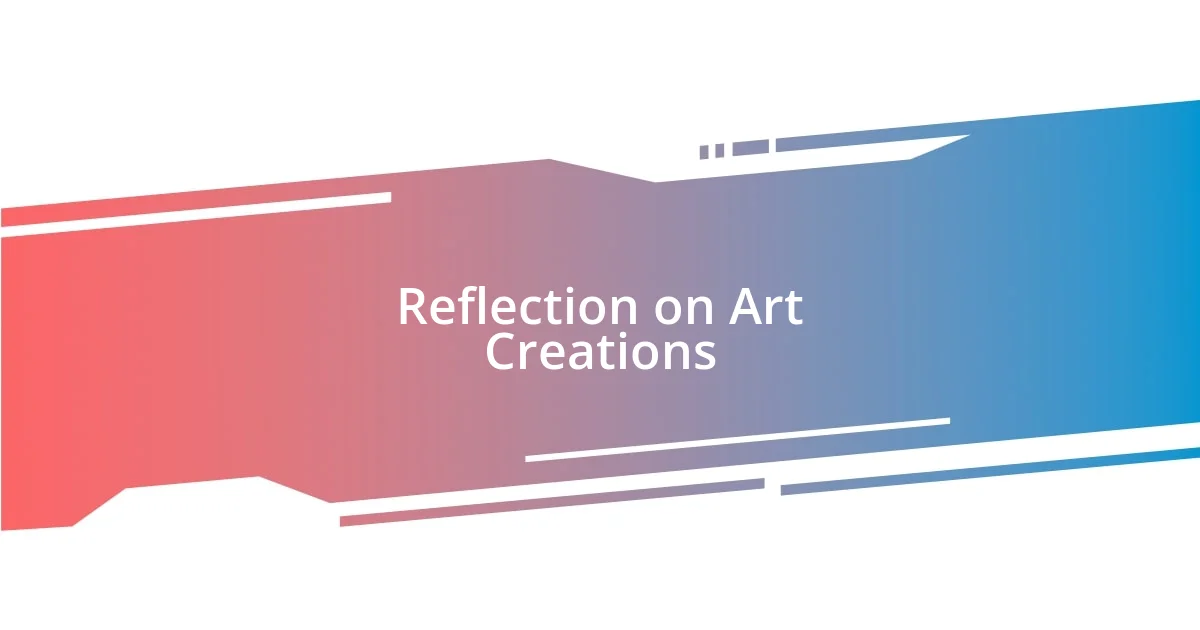
Reflection on Art Creations
Engaging with my art creations has always led to meaningful insights. One session particularly stands out; I chose to create a landscape that visually represented my emotional state at the time. As I layered colors, the stormy skies emerged alongside vibrant blooms. It was in that juxtaposition that I realized how intertwined my turmoil and hope were. Have you ever captured your feelings on a canvas, only to discover new truths about yourself?
Sometimes, reflecting on the pieces I’ve made feels like peering into a mirror of my inner world. One specific drawing I completed represented my journey through grief. As I sketched my emotions, I found that each stroke told a story, unraveling the layers of pain I had been carrying. I could almost hear my thoughts conversing with the image before me. How often do we let our emotions out… without saying a word? This silent dialogue with my art enabled me to process and eventually embrace my feelings more fully.
In those quiet moments of reflection, I often feel a surge of gratitude. One simple abstract piece I painted helped me celebrate small victories in my healing journey. While it seemed chaotic at first glance, I recognized the hidden patterns that reflected resilience and growth. This realization prompted me to ask myself: what stories are we telling through our creations, even when we’re not consciously aware? Each reflection on my art not only deepens my understanding of my emotions, but also inspires me to keep creating, to keep reflecting, and to keep growing.
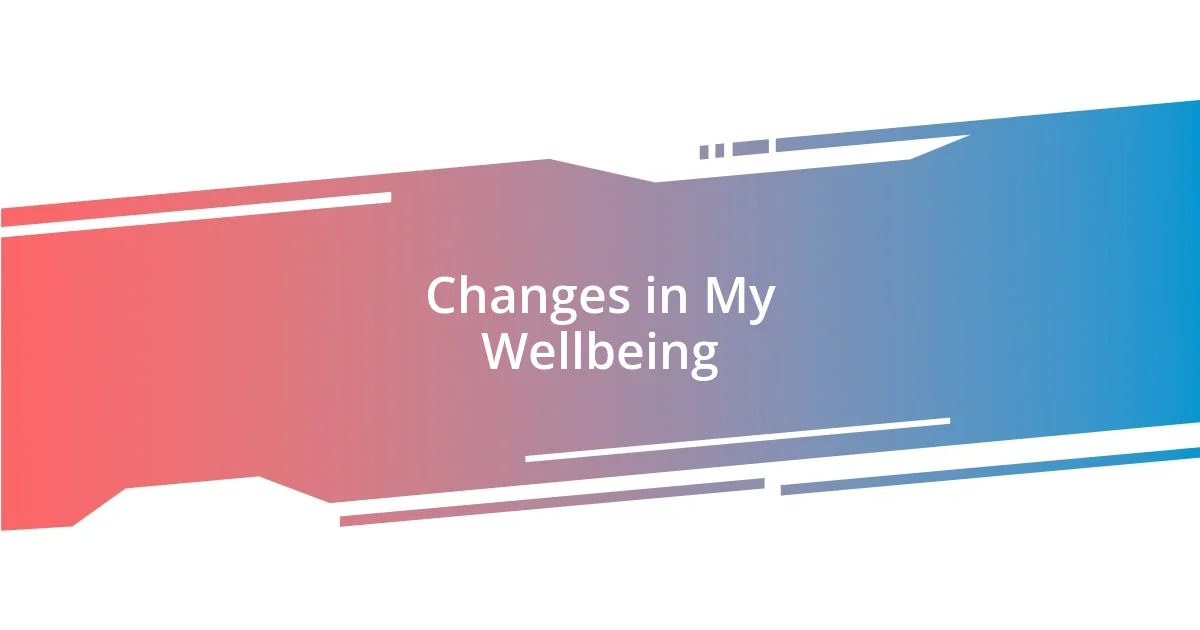
Changes in My Wellbeing
It’s fascinating to observe how my well-being shifted through art therapy. I remember one session where I spent time drawing abstract shapes while listening to calming music. As the lines began to take form, I felt a sense of clarity come over me, almost like the fog in my mind was lifting. Have you ever experienced that feeling of lightness when you let your creativity flow?
There was another moment when I completed a collage reflecting my journey of self-discovery. Each cut-out and adhesive layer represented a change in my perspective. The process of arranging those pieces felt like piecing together a puzzle of my identity. I realized that with every image I selected, I was affirming my journey toward self-acceptance. Isn’t it incredible how art provides us the language to narrate our own stories, often in ways words cannot?
Over time, I noticed my anxiety began to diminish, easing as my connection to the art grew deeper. I still recall the first time I shared a piece at a group exhibition; my hands shook in nervous anticipation. But as others resonated with my work, I felt a profound sense of connection that bolstered my confidence. Isn’t it extraordinary how sharing our art can create a powerful network of understanding? This newfound support played a crucial role in enhancing my emotional well-being, proving to me that vulnerability can lead to strength.
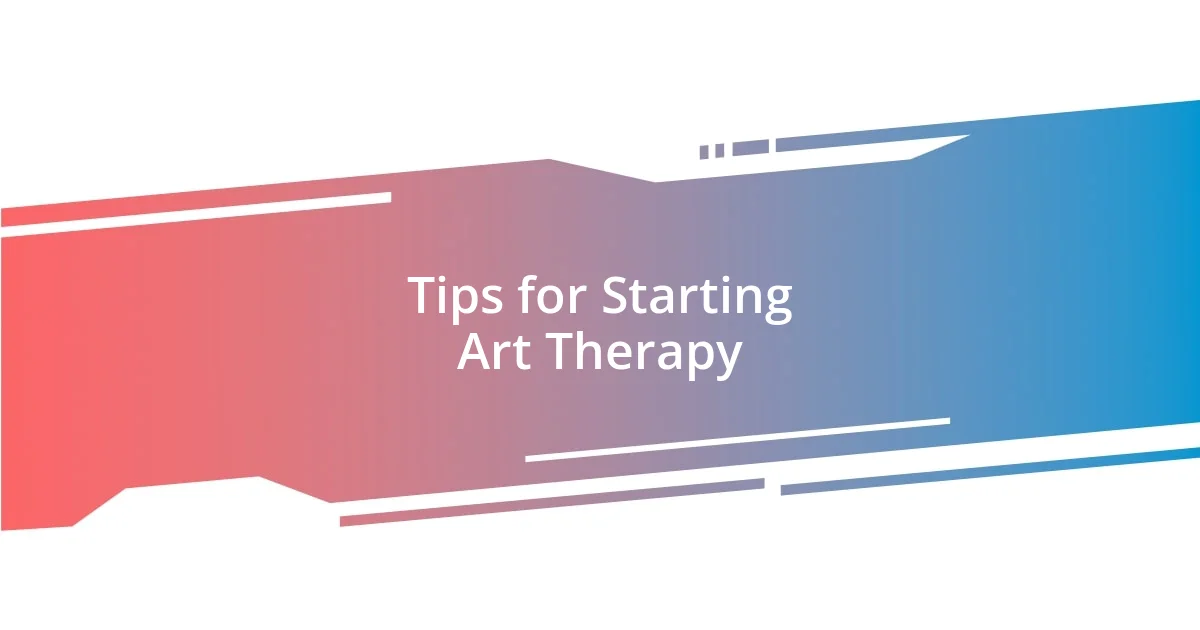
Tips for Starting Art Therapy
Getting started with art therapy can be an enriching experience, and I often recommend creating a dedicated space where you can freely express yourself. I remember setting up a small corner in my home, filled with paints, sketchbooks, and inspiring quotes. This space became my sanctuary, a place where I felt safe to explore my emotions without judgment. Have you thought about how the environment impacts your creativity?
When beginning art therapy, it’s essential to let go of any preconceived notions of “talent.” In one of my earliest sessions, I found myself overwhelmed by the idea of creating something beautiful. But then, a simple doodle brought me unexpected joy, leading me to realize that the process itself is the true art, not the final product. Have you ever created something just for the sake of enjoyment? Sometimes, that’s where the most profound insights emerge.
Lastly, don’t hesitate to incorporate other forms of creativity into your sessions. I often found solace in combining music with painting, allowing the rhythm to guide my strokes. The music opened up new emotional channels for me, making the experience even more immersive. What discoveries have you made when blending different creative outlets? Embracing this fusion can deepen your connection to your feelings and expand your artistic exploration.
